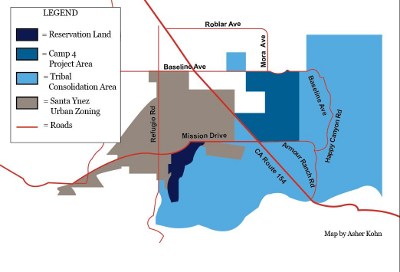Judged by the result, the Supreme Court's June 17 decision in Stop the Beach Renourishment v. Florida Department of Environmental Protection looks like a model of judicial restraint. The court unanimously rejected a claim by landowners on Florida's northern Gulf Coast that they had suffered an unconstitutional taking of property after beach restoration by local governments turned their oceanfront homes into ocean-view lots separated from the water by 75 feet of new sand.
Looked at more closely, however, the court's decision [pdf] discloses an activist impulse by the Roberts Court's committed conservatives. In a plurality opinion, four justices fell one vote short of a majority to give federal courts new power to superintend state court rulings on land use law. The ruling they sought could have led to a vast increase in property rights litigation, giving property owners new leverage to block government-backed development and improvements aimed at benefiting the broad public.
The decision came as liberal groups are stepping up their accusations that under Chief Justice John G. Roberts Jr., the court has been guilty of pro-business judicial activism. "The Roberts Court consistently pursues a political agenda that favors powerful corporate interests," according to a report by the Alliance for Justice, "and recent Supreme Court decisions show certain Justices' striking willingness to engage in judicial activism to fulfill their ideological goals."
Exhibit No. 1 in the group's indictment is the 5-4 Citizens United decision in January, which freed corporations (and unions) to spend unlimited sums from their own treasuries on political campaigns. But the report pointed to a dozen other cases in which the court purportedly "overreached" by deciding questions unnecessarily, crafting new legal standards "out of thin air," or overriding factual determinations by lower courts.
As another example, the group cited the 2009 decision, Gross v. FBL Services, that went beyond the narrow question presented to shift the burden of proof from employers to plaintiffs in one type of federal age- discrimination case. As the report notes, the logic of the decision could also apply to the broad range of job- discrimination suits (race, sex, and so forth) brought under the Civil Rights Act of 1964.
The conservative Heritage Foundation rushed out with a report depicting the liberals' accusation as "mythology." The attack, senior fellows Robert Alt and Hans von Spakovsky argue in a legal memorandum, is an effort to distract court watchers from the true record of judicial activism by liberal judges.
The court's handling of the Florida property rights case gives the warring ideological groups one more decision to debate. The case stemmed from the plan by the Gulf Coast town of Destin and its county government in 2003 to restore about seven miles of hurricane-eroded beach. Some beachfront property owners objected. Why? Because under well-established law, the restored beach would be public land, not private property.
Having paid a pretty penny for an oceanfront lot with no beachgoing public between them and the water, the owners concluded that the government was taking their property without compensation in violation of the Fifth Amendment's Takings Clause. They also claimed the benefit of Florida's 1961 Beach and Shore Preservation Act, which generally provides that beachfront owners, post-restoration, are still entitled to almost all of their pre-existing property rights.
The Florida Supreme Court rejected the owners' claim, saying the owners had lost no protected property right. The owners took the case to the U.S. Supreme Court. There, they argued the novel theory that the state court's decision on this somewhat close legal question amounted to a taking because it purportedly changed existing state law.
The Supreme Court agreed to review the decision. During arguments in December, justices across the ideological spectrum appeared satisfied that the Florida Supreme Court had a sound basis for its decision. And that is what they said in the eventual ruling. All eight justices (Justice John Paul Stevens, a Florida land owner, recused himself) agreed that the state court was not guilty of taking the owners' property.
Before reaching that conclusion, however, Justice Antonin Scalia led a four-justice bloc that also included Roberts, Clarence Thomas, and Samuel A. Alito Jr. in saying that, yes, a court ruling changing an "established" property right could amount to a taking just as much as action by a legislative or executive body. The four other justices — Anthony M. Kennedy and Sonia Sotomayor in one opinion, Stephen G. Breyer and Ruth Bader Ginsburg in another — said it was unnecessary to decide the issue. In his opinion, Kennedy warned that the plurality opinion could transform virtually any state court property rights dispute into a "takings" claim. Any losing party, he suggested, could argue that the state court had "changed" established law to its detriment.
In fact, within hours Ilya Shapiro of the libertarian Cato Institute Shapiro was hailing the four-vote opinion. "State courts are now on notice that they violate long-hailed property rights at their peril," Shapiro wrote. Four votes, of course, do not make a majority on the Supreme Court. A full court almost certainly would have rejected Scalia's position since Stevens has not embraced property rights claims in past cases. So Scalia's opinion adopting the idea of "judicial takings" represents an extended dictum of no real legal effect, unnecessary to the decision but an activist gift to property rights advocates in future cases.
Kennth Jost is a CP&DR contributing editor and associate editor of CQ Researcher. This piece also appears on his blog Jost on Justice.

